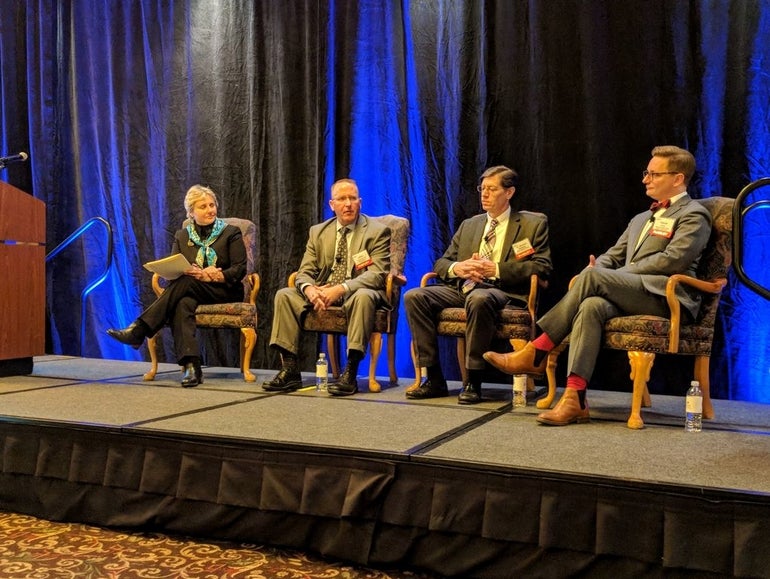As an executive at an agency aiming to improve the lives of more than 100 million people worldwide, Soma Stout would seem to have a tough job ahead of her.
But reaching that goal within two years isn’t a matter of working harder, Stout said Friday at the Central Massachusetts Health Care Forum.
“We don’t have to work harder,” she said. “We just have to work in closer partnership.”
Stout, the keynote speaker at the forum, said that much of improving health care can be accomplished through the relatively simple change of health care providers working more closely with community agencies who may know patients the best.
“Drop a chair at the table and say, what can we do to help with our resources?” she said.
The forum, held at the Beechwood Hotel and organized by the Worcester Business Journal, also included a panel that discussed the state’s high medical costs for patients and skyrocketing costs for prescription drugs.
The state has taken action to try cutting down medical costs, including forming the Health Policy Commission in 2012 as an independent agency to monitor health care spending. The commission’s executive director, David Seltz, said the good news is that Massachusetts is no longer highest in the country for costs.
Now in second place behind only Alaska, Massachusetts still has far more work to do, Seltz said. Still, the state’s most recent annual cost increase of less than 2 percent is promising, he said.
“That is a success story for this commonwealth,” Seltz said.
Other cost challenges need attention too, panelists said.
One lingering problem in trying to keep costs down is that hospitals don’t have the financial incentives to keep patients out of their facilities, said Michael Sheehy, the chief of population health and analytics at Reliant Medical Group. That puts hospitals at odds with other providers looking to initiate more preventative care, he said.
“Business models drive behavior,” Sheehy said. “It’s going to take a lot more work to get there.”
Seltz agreed, and said the state is still only slowly moving away from a fee-for-service model in how providers are paid for their services. The new MassHealth program for Medicaid patients, in which providers and insurers team in accountable care organizations, is now changing that system.
“We’re still in a bifurcated world,” Seltz said, referring to the fee-for-service model that still exists in places.
The panel, which was moderated by Fallon Health Chief Medical Officer Carolyn Langer, also addressed high prescription drug costs and the increasing use of data in health care.
“The baseline of everything we do is data,” said John Greenwood, the president of UMass Memorial Health Care’s accountable care organization.
Last year, UMass spent $650 million for a new electronic patient records system called Epic. With more data on patients, the hospital network can help doctors and nurses have more information to provide better care, Greenwood said.
As for drug costs, the panelists said high costs remain a difficult challenge.
“It’s been the number-one driver in terms of health care spending,” Seltz said. Those costs are harder to curb because costs are set nationally, he said, and based on what the market can bear and what can maximize profits for drugmakers, not on what’s best for patients.
Annual drug price increases in recent years have averaged around 8 percent or 9 percent, Sheehy said.
“Not long ago a $30,000 to $50,000 drug was considered a high-cost drug. But now you have to add a zero on that. It’s gone up by an order of magnitude,” he said. “Insulin prices have doubled in 10 years. This is, I think, the single biggest driver that we have to wrestle with.”

